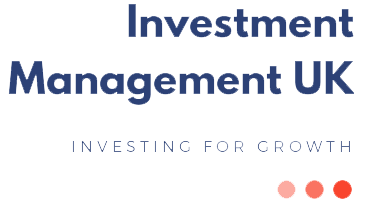
Investment Portfolio Management – What Is It?
An investment portfolio is a collection of investments held by an individual or an institution in the form of bonds, stocks, options, gold certificates, real estate, currency, or any other assets or securities generating returns. Investment portfolio management refers to the technique of management of one’s investments according to his / her predetermined financial goals. The process of investment portfolio management involves the selection of investment options based on their past performances and estimated future growth, an analysis of which assets to buy, determining the quantity and timing of assets to purchase, and making decisions on which assets to divest.
Portfolio Analysis Is An Important Part of Investment Portfolio Management
Portfolio analysis forms a part of the broad process of investment portfolio management. Portfolio analysis refers to the study of performance of specific portfolios under various circumstances. An investor or an investment professional can perform a portfolio analysis by means of specialised analysis tools. The objective here is to achieve the best possible trade-off between returns on investments and risk tolerance. The process of analysis involves the evaluation of investments and returns. This helps the analyst draw a picture of the financial and operational impact of the investment portfolio.
Investment portfolio management and portfolio analysis extends to all asset classes and securities; equities, bonds, indexes, funds, commodities, securities, and so on, and their risk factors and associated returns. The composition of investment instruments will determine the rate of success of an investment portfolio.
Investment Portfolio Management – How to Create a Portfolio and Manage It
An investment portfolio is an investment strategy of diversification. Investors invest in multiple assets to reduce risks that follow certain investments. An appropriate mix of assets and financial securities in a portfolio determines investment risk exposure and returns. To build a diversified investment portfolio, investors are required to:
Set financial goals:
Before investing, an investor must evaluate his / her present income, draw an estimate of future income, calculate the number of years left before retirement, and consider his / her present financial responsibilities. For novice investors, a good starting point is with mutual funds.
Allocate assets:
An investment portfolio includes a mix of assets and financial securities. The combination of rewards and risks will be determined by the financial instrument on which investments are made.
Avoid regular rebalancing of investment portfolio:
A good portfolio is typically one that is balanced and includes a broad range of investment classes depicting varying risk levels and returns. Rebalancing such a portfolio regularly is not advisable. Risks are usually lower in long-term investments, while the value of assets over a short term may be volatile. An investment portfolio should be balanced either annually or on long-term basis.
Building a successful investment portfolio can be achieved by taking full advantage of the investment plans offered by an investment company. Investors will need to evaluate if they are adequately insured against unexpected losses. Efficient investment portfolio management can be achieved by appointing the services of a fund manager or investment advisor.
Types of Investment Portfolio Management
Can be divided into two broad categories:
Active
The active process involves the participation of independent advisors, and / or investment managers tied to investment management companies. Investment managers formulate investment strategies based on detailed market research aimed at earning high market returns on investments through the purchase of undervalued, and selling of overvalued securities.
The success of will depend on the competency of the fund manager and the accuracy of his/her market research. The efficiency of investment portfolio management will be gauged by the profits the investment strategy earns for the investor.
Passive
The process of passive investment portfolio management involves the selection of particular index-tracking securities. Selection of asset classes and the proportion of allocation of funds, followed by rebalancing the portfolio when necessary, and maintaining regular records, are important considerations. The investment strategy is formulated with the aim of building a strong investment portfolio.
Factors Influencing Investment Portfolio Management
Before beginning the process of investment portfolio management, an investor must set his / her investment objectives. No two investors will seek the same results from their investments. One may seek safe investments and reduced risk exposure. Another may aim for rapid profit generation. Depending on investment objectives, an investor will choose between equities and debt instruments, etc.
The other factors affecting investment portfolio management are:
- A portfolio owner’s circumstances
- Measurement of investment performance, including factors like risk exposure and expected returns
- Economic conditions and how they affect the financial market
- Investment preferences (Does an investor want to invest in domestic or international markets?)
For best results when it comes to investment portfolio management, investors are advised to hire the services of financial institutions, and of investment advisors, who will not only analyse investments but also help achieve the investor’s financial goals.
